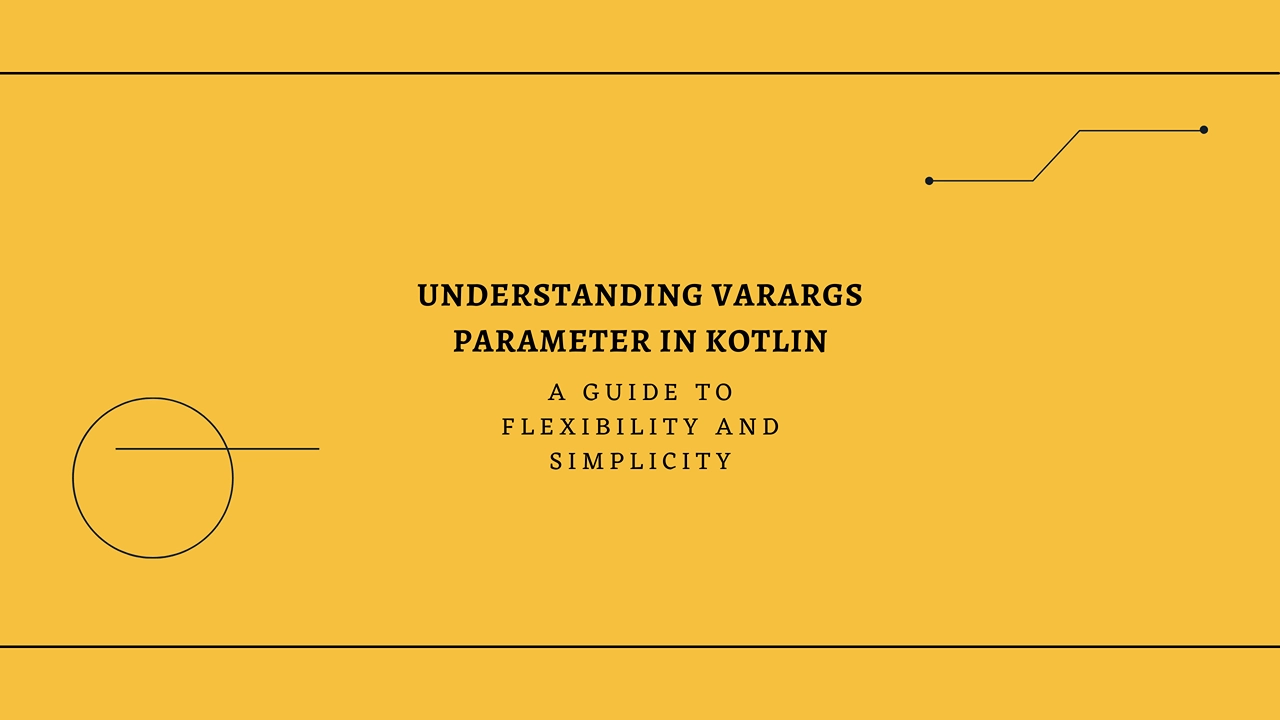Understanding Varargs Parameter in Kotlin: A Guide to Flexibility and Simplicity
Welcome to our luxurious guide on understanding varargs parameters in Kotlin! In this comprehensive article, we will explore the elegance and convenience of varargs parameters, while ensuring your content remains SEO optimized. Let’s dive into the world of flexibility and simplicity!
Section 1: What are Varargs Parameters?
Varargs parameters, known as “variable-length arguments,” inject a touch of sophistication into our code by enabling the passing of zero or more arguments of the same type to a function. With Kotlin’s syntax wizardry, declaring a varargs parameter is effortlessly graceful. Simply employ the vararg keyword followed by the parameter name and type.
To exemplify this elegance:
1fun printNumbers(vararg numbers: Int) {2 for (number in numbers) {3 println(number)4 }5}In this exquisite example, numbers manifests as a varargs parameter accommodating any number of integers as arguments. Witness its magnificence with calls like:
1printNumbers(1)2printNumbers(1, 2, 3)3printNumbers(4, 5, 6, 7)Section 2: Usage and Syntax
To harness the full potential of varargs parameters and captivate their essence effectively, we must unravel their spellbinding syntax and demystify their inner workings.
Declaring a Varargs Parameter
Indulge yourself in these steps for declaring a captivating varargs parameter in Kotlin:
Gracefully adorn the argument type with the
varargkeyword.Bestow a name befitting its magnificence upon the varargs parameter.
Let us delight ourselves with an illustrious example:
1fun myFunction(vararg args: String) {2 // Code here...3}Passing Arguments to Varargs Parameters
When it comes to passing arguments to functions with varargs parameters, you are spoiled for choice. Enchanting options await:
Gracefully separate individual arguments with commas.
Present an array of the corresponding type using the enchanting spread operator (
*).
Prepare yourself for this captivating example:
1fun printNames(vararg names: String) {2 for (name in names) {3 println(name)4 }5}6In this mesmerizing instance, we bestow individual strings as arguments upon the printNames function. However, brace yourself, for behold! It also accepts an array of strings through the splendid spread operator.
Accessing Varargs Parameters
Inside a function adorned with a varargs parameter, we can revel in its majestic presence and treat it like a regular array. Let us unfurl our imagination and weave wondrous spells using loops and other operations.
Indulge yourself in this magical snippet:
1fun calculateSum(vararg numbers: Int): Int { 2 var sum = 0 3 for (number in numbers) { 4 sum += number 5 } 6 return sum 7} 8In this enchanting tale, the calculateSum function embraces a varargs parameter named numbers, gracefully calculating their sum through an exquisite iteration over each element.
Section 3: Advantages of Using Varargs Parameters
Varargs parameters unfurl before us a multitude of advantages that elevate them to greatness within the realm of Kotlin programming. Allow us to luxuriate in the exploration of these enticing benefits:
Flexibility with Number of Arguments
One transcendental advantage bestowed upon us by varargs parameters is their ability to gracefully handle any number of arguments at runtime. Their mesmerizing flexibility eliminates the need for function overloads catering to different argument counts.
Be enthralled! Instead of conjuring multiple functions such as myFunction(arg1: T), myFunction(arg1: T, arg2: T), and so forth, we can instead manifest a singular function adorned with a varargs parameter.
Simplified Syntax
Prepare yourself for an exquisite symphony of simplicity! Varargs parameters unveil before us a code incantation that simplifies the syntax of function calls. No longer must we laboriously pass arrays explicitly; instead, we can indulge in the sheer indulgence of providing individual arguments directly. Witness the transformation into concise and readable code.
Compatibility with Arrays
Varargs parameters luxuriate in seamless harmony with arrays. The enchanting spread operator allows us to bestow arrays as offerings when invoking functions. Thus, combining individual elements and arrays becomes an effortless endeavor.
Section 4: Limitations and Considerations
As is customary, even amidst splendorous elegance, limitations and considerations must be acknowledged and respected:
Type Safety
Whilst basking in the glory of varargs parameters, let us remember that all arguments must gracefully share the same type. Mixing different types would unavoidably summon forth a forbidding compilation error.
Positional Use Only
To maintain harmony within our enchanted realms, varargs parameters may only grace our presence as the final parameter within a function’s realm. Any attempt to place them elsewhere shall result in anguish—a dreaded compile-time error awaits those who dare defy this decree.
Nullability
In their default state, varargs parameters regrettably shun acceptance of null values. However, hope springs eternal—for nullable arguments to find solace within their embrace, the parameter must be adorned with the nullable type modifier ?.
Section 5: Conclusion
Ah, dear readers, our journey through the enchanting realm of varargs parameters draws to a close. We have traversed the paths of flexibility and simplicity, savoring every moment of this exquisite adventure.
By harnessing the unrivaled power of varargs parameters in Kotlin, developers can pen elegantly flexible functions that dance gracefully amidst varying argument scenarios. Fear not, for simplicity and maintainability shall forever be preserved within your codebase.
Let us bid farewell with this parting wisdom: Embrace varargs parameters—the embodiment of sophistication and charm—unleashing their magic upon your code, forever transforming it into a glorious symphony.






Comments